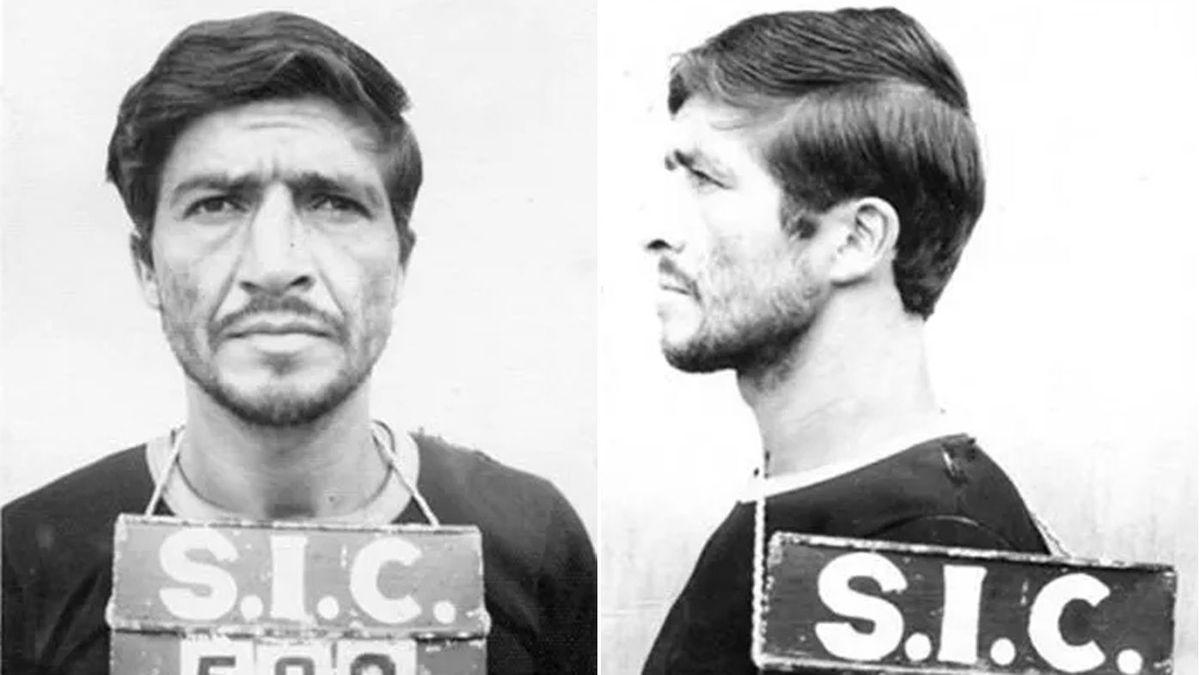Content advisory: This article contains descriptions of murder, assault, and human trafficking. Please take care while reading.
In the dark records of criminal history, certain names send shivers down the spine, and one such name is Pedro López. Known as the “Monster of the Andes,” López is one of the most infamous serial killers in the world, with a trail of unspeakable horrors spanning multiple South American countries.
Pedro López was born on October 8, 1948, in Santa Isabel, Colombia. His early life was marked by tragedy and hardship. Abandoned by his mother, López and his siblings were left to fend for themselves on the streets. López’s father, a soldier in the Colombian army, was killed in action, leaving the young boy without parental guidance. As he struggled to survive in a harsh and unforgiving world, López’s innocence was gradually eroded, setting the stage for the emergence of a remorseless killer.
López’s descent into depravity began in his teenage years, when he fell into a life of crime. He was arrested for theft, and it was during his time in juvenile detention that he experienced the brutality of sexual assault. This traumatic experience would later be cited by López as a catalyst for his heinous crimes.
By the late 1960s, López’s criminal activities escalated to include rape and murder. His first known murder occurred when he was just 18 years old, and his modus operandi began to crystallize. Targeting young girls, often between the ages of 9 and 12, López would lure them away from their families with promises of gifts or money. Once alone, he would subject them to unspeakable acts of violence before ending their lives.
In a 1999 interview with National Examiner journalist Ron Laytner, López stated,
“I went after my victims by walking among the markets searching for a girl with a certain look on her face — a look of innocence and beauty. She would be a good girl, working with her mother. I followed them sometimes for two or three days, waiting for when she was left alone. I would give her a trinket like a hand mirror, then take her to the edge of town where I would promise a trinket for her mother.”
López’s killing spree spread across South America, with Ecuador, Peru, and Colombia bearing witness to the horrific crimes committed by the Monster of the Andes. Estimates of the number of victims vary, but it is believed that López murdered at least 110 young girls, although he later claimed that the number was much higher, possibly reaching into the hundreds.
In the Examiner interview, López claimed,
“There is a wonderful moment, a divine moment, when I have my hands around a young girl’s throat,” he relished. “I look into her eyes and see a certain light, a spark, suddenly go out. Only those who kill know what I mean … The moment of death is enthralling and exciting.”
His ability to move freely between countries, coupled with the lack of effective communication and coordination between law enforcement agencies, allowed López to evade capture for an extended period. Authorities were often slow to connect the dots between the seemingly isolated cases, and López took advantage of the lax security measures in many South American regions.
In 1980, López’s reign of terror finally came to an end when he was apprehended by Ecuadorian police. A failed abduction attempt led to his capture, and the police soon realized the extent of his crimes. López, however, was unrepentant. During his interrogation, he calmly confessed to the murders of over a hundred young girls, providing gruesome details of each crime.
“My little friends liked to have company… I often put three or four into one hole. But after a while I got bored because they couldn’t move, so I looked for more girls.”
López’s trial in Ecuador in 1981 was a media spectacle. The enormity of his crimes, coupled with the gruesome details he provided, horrified the public and captivated the media. In a shocking turn of events, López was convicted of only 110 murders and sentenced to just 16 years in prison. The lenient sentence was due to Ecuador’s legal system at the time, which had a maximum penalty of 16 years for any crime.
This decision sparked outrage and protests, both within Ecuador and internationally. Advocates for justice demanded a more severe punishment for López, given the magnitude of his crimes. Amid the controversy, López’s sanity was called into question, and he was declared mentally unfit to stand trial in Colombia for a separate murder charge.
In a bizarre turn of events, Pedro López was released from prison in 1994, having served only 14 years of his 16-year sentence. Despite public outcry and appeals from the families of his victims, López was set free due to good behavior and time served. His release added fuel to the debate over the efficacy of the legal system in dealing with serial killers, particularly those responsible for such heinous crimes.
Following his release, López seemingly vanished into thin air. The exact whereabouts of the Monster of the Andes remains unknown, and the lack of a tracking system or international cooperation allowed him to escape justice once again. The mystery surrounding López’s disappearance only deepened the chilling legacy of the man who had terrorized South America for over a decade.
The unresolved questions surrounding López’s release and subsequent disappearance add an eerie element to the narrative, leaving the world to wonder where this remorseless killer might be hiding and whether he will ever be brought to justice. The story of Pedro López serves as a cautionary tale, prompting societies to reevaluate their approach to criminal justice and the rehabilitation of individuals capable of such unspeakable atrocities.

